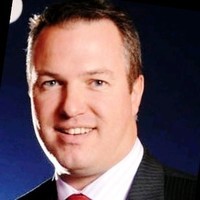- Video Library
- Brian Thornes, X-Bolt Trauma Orthopedics - Trauma Surgery Devices | LSI Europe '22
Brian Thornes, X-Bolt Trauma Orthopedics - Trauma Surgery Devices | LSI Europe '22

Brian Thornes
Brian Thornes is a former orthopaedic surgeon with 17 years of clinical experience, predominantly specialising in trauma. Brian is a serial inventor of medical devices, most notably the TIGHTROPE®, which is licenced to Arthrex Inc, FL. Brian has overseen the development the X-BOLT® product portfolio and their validation in large multi-centre clinical trials.
Brian has a medical degree from Trinity College Dublin, a Masters in Surgery, Fellowship of the Royal College of Surgeons in Ireland and an MBA. Over the past decade, Brian has served on a number of Boards, including Clontarf Orthopaedic Hospital, The King’s Hospital School, and the Higher Education Authority of Ireland.
Brian Thornes
Brian Thornes is a former orthopaedic surgeon with 17 years of clinical experience, predominantly specialising in trauma. Brian is a serial inventor of medical devices, most notably the TIGHTROPE®, which is licenced to Arthrex Inc, FL. Brian has overseen the development the X-BOLT® product portfolio and their validation in large multi-centre clinical trials.
Brian has a medical degree from Trinity College Dublin, a Masters in Surgery, Fellowship of the Royal College of Surgeons in Ireland and an MBA. Over the past decade, Brian has served on a number of Boards, including Clontarf Orthopaedic Hospital, The King’s Hospital School, and the Higher Education Authority of Ireland.

17011 Beach Blvd, Suite 500 Huntington Beach, CA 92647
714-847-3540© 2025 Life Science Intelligence, Inc., All Rights Reserved. | Privacy Policy







